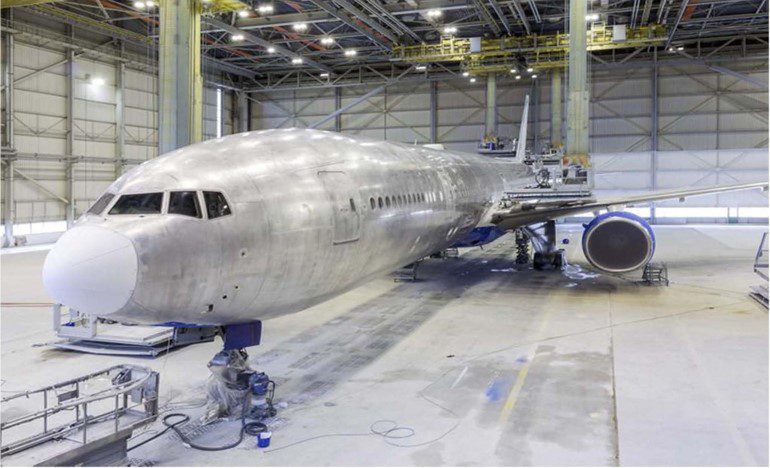CAMO and Aircraft Lease Transition – Aircraft Painting Hangar Representation
While on-site for a paint event representing the aircraft lessor it is frequent practice to be present for the post primer inspection to ensure you are happy with application and no defects are found such as dust inclusions, sags or runs.
As the primer is a matt finish it often difficult to see such defects in the hangar environment, so a torch is essential and then review by area.
Upper surfaces can suffer dust contamination from hangar ceilings.
Areas where there is an opening, door, or other disturbance in the surface can have runs (excess paint running down fuselage)
It is important to pay attention to overcoat times and these can be in each products technical data sheet readily available online.
These should be observed in the painting phase and ensure they are adhered to. Commercial pressure and time constraints should not override any manufacturers recommendation that applies to their product.
Paint Application
Paint systems are commonly one of the following:
Topcoat System (TC).
Basecoat/Clearcoat System (BC/CC).
TC systems use strong single stage paints whereas BC/CC systems combine base coat layers of colour with a clear coat finish layer that provides extra protection against UV damage and erosion.
Previously the additional layers meant a heavier system, but modern advances have led to thinner paint layers being developed and has reduced this issue.
Your paint system to be applied can be determined by looking at the paint EO/EB/SB which will detail paint applications. A more detailed description can usually be found in the paint plan supplied by the paint facility.
Paint Application
End of Lease (EOL) aircraft often return as base white livery as per agreements, which results in one paint application of white over the primers being the core requirement.
If the paint event is applying a specific livery, this is achieved by combining a base layer with supplemental paint colours on top.
Stencils will have been fabricated to use in creating the designs or logo wording we see on aircraft today, although in some instances decals may be used.
Locating and hanging the livery stencils is a specialised task and can be slow and tedious to get right.
It is good practice for the on-site representative to be available to support and approve positioning queries that may arise.
Like primer layers, paints have environmental conditions and overcoat windows to be adhered to which can be found in the paints technical data sheets.
Follow us on LinkedIn and check out our paint course https://ialta.aero/aviation-courses/aircraft-paint-awareness-training-course
